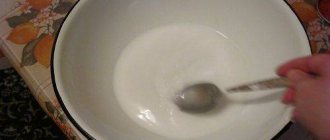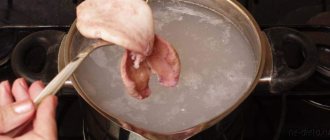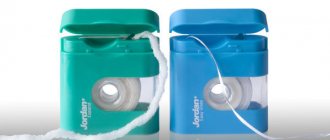Manufacturer:
Japan
Compound:
100% viscose
Weight:
46 gr.
Length:
6 meters
Gymnastics ribbon 6 meters Sasaki M-71V
Classic Japanese Sasaki ribbon of excellent quality for older gymnasts.
A large palette of colors and excellent aerodynamic properties are the key to the model’s long-term popularity. The tape is FIG certified. The Japanese Sasaki M-71V ribbon is monochromatic, but the choice of colors is truly huge. Therefore, choosing an item for a gymnastics leotard will not be difficult.
How to properly care for your tape
The ribbon is the most spectacular and favorite object in rhythmic gymnastics. However, she is quite capricious. Therefore, it is especially important to properly care for the tape. What you need to know about care? First of all, the tape cannot be washed in hot water. The maximum temperature can be 30 degrees. Do not boil or bleach under any circumstances. After washing, the tape becomes soft and holds the pattern much worse. To restore its working qualities, starch it.
How to starch a ribbon for rhythmic gymnastics?
To starch a six-meter long rhythmic gymnastics ribbon, prepare a saucepan, three glasses of water and three tablespoons of starch.
Stir everything in a saucepan until smooth and put on fire. Cook over low heat, stirring until a mass similar to jelly is obtained (10-15 minutes). After the solution has cooled, put the tape in the pan and leave for 10 minutes. Then take it out over the bath and pass along the entire length between your fingers to remove excess starch. Clothing, interior decoration or a gift is considered a bow, which allows you to add zest to any outfit or gift. A beautiful bow can change the style and appearance of clothing, give your hair an elegant look, make it special and beautiful. Modern fashionistas often use bows to create a new look, pinning them on clothes, a hat or a handbag. And of course, it’s hard to imagine without first-grader girls who have elegant hairstyles with big bows on their heads. Every good housewife knows that in order for the bow to keep its shape, get dirty and wrinkle less, it needs to be starched.
Starch gives the item additional strength, whitens the item a little, and adds freshness to the material. In the process of starching a bow or any other item, the starch partially breaks down, creating a thin, smooth and transparent breathable film on the surface of the material, which precisely protects the fabric from contamination, making it more durable and stable. In Soviet times, housewives were required to starch all existing things in the house, but time has passed, and modern women extremely rarely resort to such a procedure. They prefer more modern, imported products. However, in order for a decorative bow to look beautiful and keep its shape, it is probably difficult to do without starch. We recommend that you read the step-by-step instructions - How to starch a bow?
Starching a bow at home is not at all difficult; for this you will need a minimum of materials and equipment:
- small enamel basin;
- water;
- potato or corn starch.
Almost every home has starch, but if you don’t have starch, this is not a problem, you can buy it at any grocery store or supermarket. When buying starch, you can opt for liquid starch, which does not need to be diluted with water during the process. You can also buy starch - an aerosol, which is very easy to use. However, let’s consider the traditional method of starching a bow, which is used by most housewives.
Features of this tape
Buying a ribbon for gymnastic exercises will not be a problem. Having ordered a product online, all you have to do is wait for the package to be delivered to your home. Firms specializing in the manufacture and sale of sports goods will ensure the purchase of tape made from high-quality fabric from both domestic and foreign manufacturers.
To make ribbons used in rhythmic gymnastics, satin is usually used. This is a rather soft fabric that cannot hold the required shape on its own. Starched tape does not wrinkle as intensively and is less susceptible to contamination.
Rhythmic gymnastics tape can only be washed in cold water without aggressive detergents.
In order for the ribbon to retain its properties and look beautiful at the most crucial moments of the competition, it must be properly cared for. The satin can be washed in 30-degree water using a washing machine in the “delicate” or “hand wash” mode. But even in this case, after 2-3 washes the tape loses some properties.
First of all, the tissue will lose strength, which will prevent the athlete from performing the exercises as required by the program. To prevent this from happening, the rhythmic gymnastics tape must be starched after each wash. In addition, it should be sprayed with an antistatic agent so that during movement it does not produce a static effect and does not stick to the carpet of the hall or to the athlete’s costume.
If there is a need to color the tape or apply a design, you can use acrylic paints or special markers for drawing on fabric. The dried tape is ironed through thin cotton fabric. Ironing is carried out at maximum temperature with steaming.
How to starch tape
Before starch, you should purchase the main component. Both potato starch and those made from corn kernels will do. But if the tape is light, then potato starch is preferable, since it has a bluish tint and does not leave a yellowish tint. In addition, the process of hardening and drying is somewhat faster than that of corn.
The tape is made from durable but very light fabric, so you will need a little starch. It is necessary to observe the proportion of the mixture: 1 tbsp. l. starch for 1 tbsp. water. It is advisable to take 3 tbsp for a six-meter tape. l. starch powder and 3 tbsp. water. The denser the tape fabric, the more starch you will need.
After this procedure, the starched fabric has an airtight, smooth film on the surface, enveloping the fabric in an even layer.
How to properly dilute the solution
Before starching things, they must be rinsed in advance. The procedure can be performed on both wet and dry tissues. There are soft, medium and hard starching, depending on the concentration of the solution and the purpose of the product.
- Soft processing – used for processing bed linen, blouses, dresses. Add 0.5–1 teaspoon of starch per liter of water.
- Medium starching – intended for processing shirts, napkins and tablecloths. Per liter of water requires 1 tbsp. spoon of starch.
- The hard method is for caps, collars and cuffs. For 1 liter of solution you will need 2 tbsp. spoons of starch.
Other methods of starching
When buying starch, you can opt for an already diluted product or in the form of an aerosol. But the method using starch powder is more reliable and cheaper.
Starch the tape using a spray with a similar effect. It should be sprayed from a distance of 20-25 cm, having first studied the attached instructions. After drying, iron. The tape will acquire shine, smoothness and strength.
Liquid starch sold in retail chains cannot be boiled. Just pour it into a container and dip the tape into it. After 5-10 minutes, remove the tape, dry it, and then iron it.
Source
Starch gauze and bandages
This will require a medium or hard method.
- Dilute the required amount of starch, immerse gauze or a product made from it into the resulting solution (it should be warm). After a few minutes, remove the gauze and carefully straighten it so that there are no creases. Dry slightly, then you can iron.
- To starch a bandage or gauze for medical purposes, select the medium type of starch, unwrap the bandage or gauze, and immerse it in the solution for 20-25 minutes. There is no longer any need to wash and rinse; all that remains is to dry the product slightly, after which you can iron it and carefully roll it up.
If a harsher starch is required, double the starch dosage.
Methods for starching satin ribbon
Before starching, the tape must be washed with a suitable product and rinsed thoroughly. The starched fabric can be dry or damp - you can also squeeze it lightly.
We immerse the material in the prepared solution so that there are no “islands” on the surface of the paste. The fabric should remain in the starch for about twenty minutes, which is stirred periodically, allowing the fabric to be completely saturated. Then the removed tape is cleaned of excess solution by passing it between tightly clenched fingers. Do not twist! After drying in a suspended position, the ribbon must be ironed correctly - through the paper and turning off the steaming mode.
As a result of manipulation, an additional layer is formed on the surface of the fabric, protecting against the penetration of air and dirt.
This old method of starching is time-tested and the least wasteful, but there are others. If you have doubts about the success of a self-performed procedure, you can purchase a finished product. It could be:
In the first case, we proceed as in the “classic” version of starching: immerse the ribbon in the solution, take it out after ten minutes, dry it, iron it. In the second case, we spray the product from a distance of about twenty-five centimeters, trying to make the layer uniform.
Advice! Gelatin can be used as a replacement for starch: pour a tablespoon of powder with a small amount of cold water and leave to swell. Having waited for the result, add water to two hundred grams and put on low heat, heat, but do not boil. Once the gelatin has completely dissolved and cooled, you can put the tape in it.
Source
Types of processing at home
First of all, to starch a dress for pomp, you need to prepare a solution. For this you will need water and regular potato starch. Depending on how rigid a shape you want to give to the clothing, as well as on what fabric the product is made from, there are three degrees of concentration of the prepared solution:
- Soft solution: 0.5 teaspoon of starch per 1 liter of water. It can be used to process light fabrics such as chiffon.
- Medium hardness solution: 1 tablespoon of starch per 1 liter of water. Suitable for linen, cotton and knitted garments.
- Hard solution: 2 tablespoons of starch per 1 liter of water. It is customary to use this solution to starch individual parts of clothing - cuffs, collars, etc.
The solution is prepared in the following sequence:
- You first pour the required amount of starch into the container, based on the required consistency, then gradually pour cool water into it, simultaneously dissolving it and kneading the lumps until the consistency of thick sour cream is achieved.
- Only after this do you pour boiling water into the paste in a thin stream.
In order not only to give your wedding dress more pomp, but also to add shine, you can add a little table salt or a drop of melted stearin to the mixture with starch. You need to iron a damp, starched wedding dress very carefully, smoothing out all the small details, flounces, and folds.
Thin and delicate fabrics are treated in the softest solution. How to starch a chiffon dress: you need to prepare the required amount of mixture in the proportion of 1 teaspoon of potato starch per 1 liter of water and place the whole dress in it.
After keeping it for about half an hour, you need to take it out and squeeze it slightly
It won’t take long to dry, and it’s important not to miss the moment. Although, even if it happens that the dress is completely dry, you can lightly spray it with water from a spray bottle before ironing
As you can see, this process is not much different from how to starch clothes at home.
How to properly starch a dress with lace knitted on it:
- dip in medium starch solution for 30 minutes;
- dry the dress a little;
- lay it horizontally, straighten the lace and secure it with tailor's pins;
- iron gently.
To give the dress more pomp, girls resort to cunning and starch not the hem, but only the petticoat. If there are several layers, only the lower ones are starched, otherwise the dress will come out too fluffy. The question often arises of how to starch the petticoat of a child’s dress.
Before this, we mainly looked at how to starch a dress completely. But it happens that only a separate part needs such a procedure. How to starch clothes at home in this case: you can buy a special product in a convenient spray bottle and apply it to the shuttlecock.
You can starch a dress using several methods. The means and method of starching are selected taking into account the type of fabric.
Soft processing is suitable for thin fabrics, cambric, muslin, chintz, light knitwear, tulle.
Medium application is suitable for cotton and linen bed linen, items made of silk, tulle, cotton, linen, openwork or lace components.
Depending on the type of fabric, suitable industrial products are selected or a solution of the required concentration is prepared at home.
Before soaking the dress, cool the finished solution until it reaches room temperature. Otherwise, there is a high probability of damage to the item during processing.
Now you can starch the dress. It is lowered into the container, straightening out all the folds so that the fabric evenly absorbs the starch liquid. To obtain the desired result, 10–20 minutes of soaking is enough. Then the dress is taken out, gently wrung out, and inspected to see if the mixture has been applied evenly to all places.
First, determine the nature of the fabric and choose the desired processing method: soft, hard or medium. Decide what will be used - homemade starch or an industrial product. Any dress, even a new one, must be washed and all dirt removed before soaking.
Depending on the purpose, the outfit is soaked completely for 15–20 minutes or its individual components are treated: petticoat, bows, ruffles, with a sponge or spray bottle. To make the dress snow-white, add a drop of blue to the solution; To facilitate the ironing process, you can add salt or 2 tsp to the liquid. milk.
The treated dress is dried at room temperature, without accelerating the process with a hairdryer or heaters. It is better to iron a damp outfit, protecting it with a layer of gauze. You cannot use the steam function when ironing. Do not dry treated dresses in the cold.
Features of this tape
Buying a ribbon for gymnastic exercises will not be a problem. Having ordered a product online, all you have to do is wait for the package to be delivered to your home. Firms specializing in the manufacture and sale of sports goods will ensure the purchase of tape made from high-quality fabric from both domestic and foreign manufacturers.
To make ribbons used in rhythmic gymnastics, satin is usually used. This is a rather soft fabric that cannot hold the required shape on its own. Starched tape does not wrinkle as intensively and is less susceptible to contamination.
Rhythmic gymnastics tape can only be washed in cold water without aggressive detergents.
In order for the ribbon to retain its properties and look beautiful at the most crucial moments of the competition, it must be properly cared for. The satin can be washed in 30-degree water using a washing machine in the “delicate” or “hand wash” mode. But even in this case, after 2-3 washes the tape loses some properties.
First of all, the tissue will lose strength, which will prevent the athlete from performing the exercises as required by the program. To prevent this from happening, the rhythmic gymnastics tape must be starched after each wash. In addition, it should be sprayed with an antistatic agent so that during movement it does not produce a static effect and does not stick to the carpet of the hall or to the athlete’s costume.
If there is a need to color the tape or apply a design, you can use acrylic paints or special markers for drawing on fabric. The dried tape is ironed through thin cotton fabric. Ironing is carried out at maximum temperature with steaming.
How to starch tape
Before starch, you should purchase the main component. Both potato starch and those made from corn kernels will do. But if the tape is light, then potato starch is preferable, since it has a bluish tint and does not leave a yellowish tint. In addition, the process of hardening and drying is somewhat faster than that of corn.
The tape is made from durable but very light fabric, so you will need a little starch. It is necessary to observe the proportion of the mixture: 1 tbsp. l. starch for 1 tbsp. water. It is advisable to take 3 tbsp for a six-meter tape. l. starch powder and 3 tbsp. water. The denser the tape fabric, the more starch you will need.
After this procedure, the starched fabric has an airtight, smooth film on the surface, enveloping the fabric in an even layer.
Other methods of starching
When buying starch, you can opt for an already diluted product or in the form of an aerosol. But the method using starch powder is more reliable and cheaper.
Starch the tape using a spray with a similar effect. It should be sprayed from a distance of 20-25 cm, having first studied the attached instructions. After drying, iron. The tape will acquire shine, smoothness and strength.
Liquid starch sold in retail chains cannot be boiled. Just pour it into a container and dip the tape into it. After 5-10 minutes, remove the tape, dry it, and then iron it.
Each gymnast gets used to her apparatus over long hours of training and apparently they get used to it :). The girl works well with some of them, but there are others exactly the same at first glance, who don’t “listen” to her at all.
Losing or damaging a favorite object at competitions is one of a gymnast’s worst nightmares, but girls only realize this fact when they find themselves in a similar situation.
Having once performed with someone else’s ball, which literally jumped out of her hands during an exercise, or with a borrowed jump rope, which out of the blue got tied into knots, the gymnast gets used to being more careful with her family, comfortable and obedient objects.
Workwear
It is customary to keep the clothing of doctors, food service workers, and laboratories in proper condition. A white robe and hats are typical for representatives of all of the above professions.
- A solution of medium intensity is optimal. After preparing it, immerse already clean clothes (robe, shirts) in the solution and soak them in it for about 15 minutes, stirring constantly.
- How to starch a chef's hat? You will need a hard solution in which to soak the product for 20 minutes. After processing the wet cap, you need to “put it on” an inverted three-liter jar and let it dry in this form. Adjust the cap if necessary.
There is no need to rinse the robe and cap after starching. All that remains is to iron the products with an iron; first, you can lightly sprinkle the fabric with water.
If you learn how to starch things correctly, you will later save yourself from a lot of problems and difficulties. The skill will be useful not only for preparing workwear, but also for children's suits, men's shirts and decorative items.
How to store a gymnastics hoop
Polyethylene hoops are distinguished by their plasticity, so they do not break. But they have their own disadvantage: possible loss of shape (to an oval or “figure eight”) if handled incorrectly. To prevent this, immediately after purchase, you need to wrap the hoop with decorative tape and secure the design by wrapping it with one layer of transparent tape. This will add the required grams to the hoop according to FIG rules (the hoop must weigh at least 300 g) and make it stronger.
Store the hoop in a horizontal position (in a vertical position, the hoop imperceptibly “flattens”).
In hot weather, try to monitor the shape of the hoop, because it is more susceptible to changing shape and when the temperature drops (for example, at night) it can “freeze” in its previous shape.
Proper care and respect for your gymnastics equipment will significantly extend their service life.
How to care for gymnastics clubs
Rubber clubs for rhythmic gymnastics.
Over time, the color coating on rubber clubs gradually wears off. This can be corrected to a certain extent, and we can try to give the clubs a more attractive appearance. You can paint the clubs again; for this you can use paint in spray cans. It is sold in any specialized store, and you can find just a huge amount of flowers. You can get creative and paint the clubs using a stencil, for example, thus giving them the colors, patterns and shades of your swimsuit. It turns out beautifully if you make the base a single color, and after drying, apply a design, you can even use a brush.
Plastic clubs for rhythmic gymnastics.
The main problem that arises periodically with this item is its fragility. This only applies to plastic clubs. In uncarpeted training rooms and in gyms with concrete floors, even if there is carpet, the clubs may break into pieces if dropped. If you train in such a gym, it is better to use rubber clubs.
How to starch things in an automatic washing machine
You can also starch fabric and clothes in a washing machine; the method is especially suitable for processing bed linen; it is large items that are most difficult to starch by hand. Prepare a solution from the following ingredients:
- Potato starch 1 teaspoon.
- Water 500 ml.
Dissolve starch in cool water, then heat it. You will get a paste that should be without lumps. Cool the resulting product and add it to the conditioner compartment when washing in the washing machine (about 100 ml no more). Wash your laundry as usual, and when finished, wipe the machine drum with a soft cloth to remove any residue.
How to care for rhythmic gymnastics ribbon
How to color the ribbon?
To color the ribbons, special acrylic paints for fabrics are used (they also paint swimsuits) or permanent markers (very, very high quality). After applying the design, you need to let the tape dry on its own or dry it with a hairdryer and iron it through a thin cotton fabric. It is recommended to wash the dyed tape as rarely as possible, in cold water, as carefully as a swimsuit.
After a few washes, the tape usually becomes too soft to work with. Therefore, after the next wash, the tape can be starched and then ironed as usual.
To prevent the tape from sticking to the suit and carpet, you need to spray it along its entire length with any antistatic agent.
How to care for your ribbon stick
Always carry your wand in a case. In transport, it is better to carry it in your hands, rather than in a backpack or bag. Before competition, always check that the carabiner is in good working order. If some parts of it are bent, then it is better to perform with another carbine or with a braided thread instead.
Return to category: Useful information
Proper care of any of the equipment that athletes use during performances in rhythmic gymnastics competitions guarantees the possibility of long-term use, because most of the equipment is quite expensive, and not every gymnast can afford to change them constantly.
Jump rope
1. Today, most often, jump ropes are made from natural hemp or synthetic materials. The rope is adjusted individually to the height of the athlete - to do this, just stand on the center of the rope and make marks on it so that the future ends of the object (don’t forget to make room for knots) reach the gymnast’s armpits. Only after this the rhythmic gymnastics rope be cut to the same distance on both sides, then knots are tied and secured at the ends.
To prevent the threads of the cut ends of the jump rope from unraveling over time, the ends can be slightly burned with a lighter until slightly hardened. The main thing is not to overdo it, because if the scorched ends are too hard, they can rub the gymnast’s palms. 2. A product made of synthetic fibers (as a rule, nylon is used) usually retains its original appearance longer - it can, if necessary, be hand and machine washed with detergents for delicate fibers. A jump rope made from natural fibers after washing is not suitable for training and performances - the product loses its original appearance and color.
Hoop
Today,
hoops for rhythmic gymnastics can be made of plastic, PVC, polyethylene, which are highly flexible.
However, they are often subject to circumferential deformations, which will make the hoop unusable. This will help prevent this:
1. Decorative wrapping of the hoop with self-adhesive tape and tape (at the same time, the required weight of the object will be achieved).
2. Store the projectile only in a horizontal position and preferably in a case.
3. Careful attention to the air temperature in the storage room - both high and low temperatures can very quickly damage the material.
If possible, it is better to purchase a seamless (solid) hoop. This option will be more expensive, but this design provides more guarantees that the object will not crack (and cracks right at the joint are a common phenomenon).
A rhythmic gymnastics ball is also subject to deformation, to prevent which you need to:
1. Always store it only in a case (bag) made of soft fabric - this will help avoid accidental punctures and scratches, as well as
prevent deformation when temperature changes.
2. It is not recommended to deflate the ball frequently, even during transportation - frequent impact damages the nipple; when inflating, the pump needle should be wetted with water.
3. If necessary, the ball can be washed, but only with soap suds and mandatory drying.
Maces
Clubs used today are made of plastic or rubber (natural or synthetic), so they can break quite often even if accidentally dropped.
That is why during training it is recommended to use rubber clubs for rhythmic gymnastics.
The operation of the clubs involves:
1. Using a special case.
2. Wrapping and pasting objects with self-adhesive tape.
Ribbon
1. To extend its service life, the rhythmic gymnastics ribbon can be washed with mild detergents, and after that it must be starched and ironed.
2. Before a performance, to remove static electricity, a gymnast’s ribbon must be treated with antistatic agents along its entire length.











